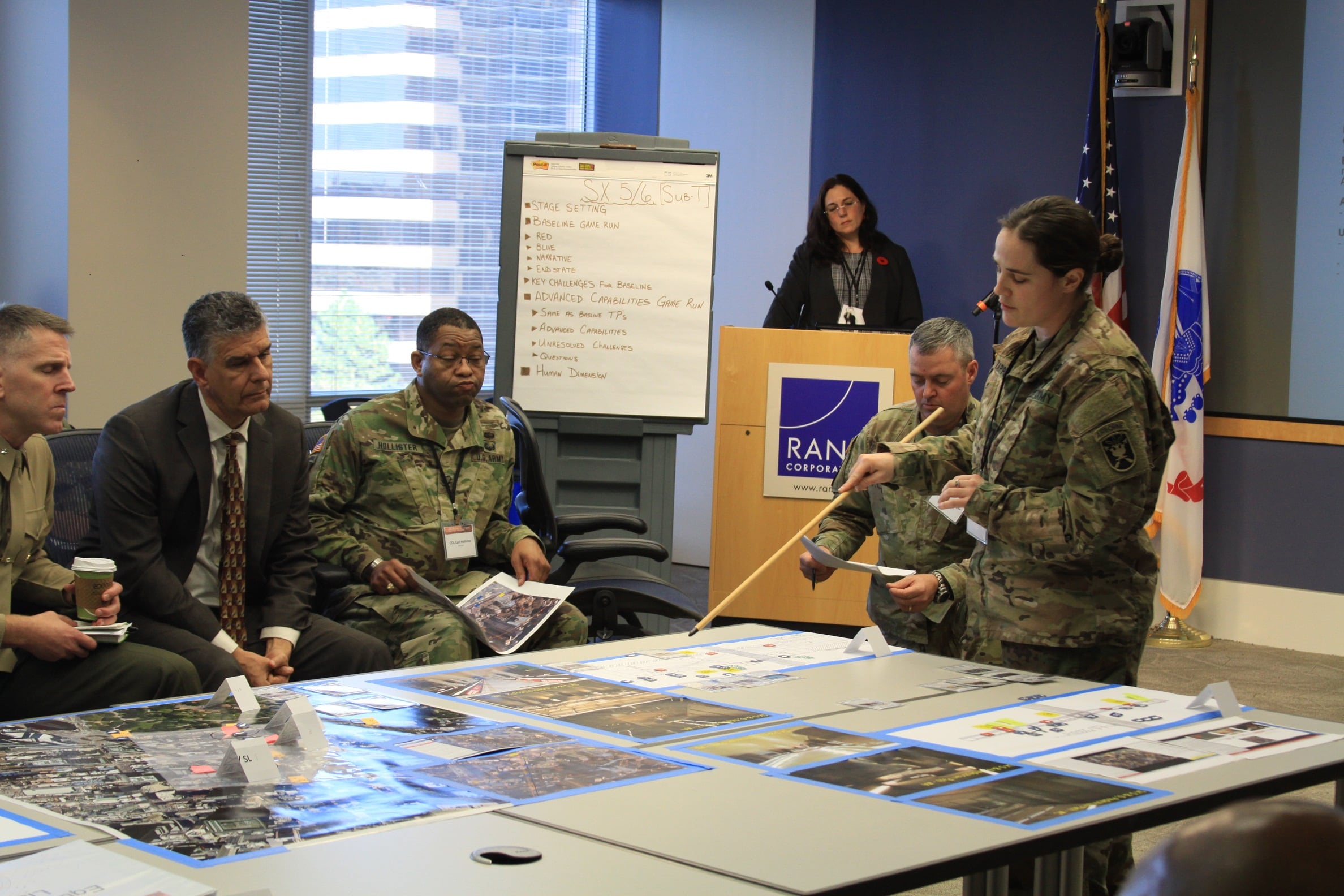A recent Army and Marine war game that included engineers, academics and other defense representatives evaluated how troops could use experimental technologies to fight in dense urban areas and underground.
The U.S. Army Subterranean and Dense Urban Environment Materiel Developer Community of Practice is a working group that has conducted three prior workshops that set the challenges of fighting in those environments.
“Fighting in dense urban environments and the unique challenges it presents is still not totally understood, and this study was the front-end look at identifying and defining those materiel challenges to drive where investments need to be for this operational environment,” said Bob Hesse, technical lead coordinator for the Community of Practice.
The most recent “tabletop” exercise looked at the gear troops might need to get through those intense battle scenarios, according to an Army release.
Soldiers and Marines worked as friendly and enemy forces during the exercise, evaluating 48 experimental future technologies.
One such piece of tech would be using sensors that attach to the exterior building wall to help troops visualize the interior layout.
And every advantage in these terrains can help.
“Everything that Marine formations or Army formations have to do is more difficult when you take it into an urban environment,” explained Marine Corps Brig. Gen. Christian Wortman, commanding general of the Marine Corps Warfighting Laboratory, and vice chief of Naval Research.
The Marines recently launched Project Metropolis II, a five-year effort to better prepare Marines for likely future urban battles.
“Across the warfighting functions — whether it’s intelligence, surveillance or reconnaissance, collections, maneuver, force protection, command and control, logistics and sustainment — all of those things are complicated and challenged by the compartmentalized terrain that’s present in the urban environment and the three-dimensional nature of the urban environment,” Wortman said.
And that multi-dimension challenge grows with the subterranean.
For both above ground and underground, robotics will play a major role. The Squad X project by Defense Advanced Research Projects Agency, for example, is blending robots into dismounted formations.
Soldiers with the 10th Mountain Division and 101st Airborne Division along with Marines at Camp Lejeune, North Carolina, are experimenting with four submissions for the Squad Multipurpose Equipment Transport gear mule that will carry fuel, water, ammunition and equipment for a squad through rough terrain over 60 miles on a 72-hour mission.
Lt. Col. Calvin Kroeger, battalion commander for the 35th Engineering Battalion, ran one of the blue teams during the tabletop exercise.
Participants ran scenarios such as a high-intensity fight, a traditional counter-insurgency and a security force-assisted mission, all under the conditions of a megacity.
But the wargaming went beyond simply clearing buildings and attacking objectives.
Teams countered enemy social media campaigns, communicated underground, and assessed the second- and third-order effects of engaging the enemy with lethal munitions, which could impact local power, gas and water networks.
“How we employ our capabilities changes as you move from a high-rise platform to urban cannons,” Kroeger explained. “But you’re also looking at everything under the ground as well, where you can’t use a conventional means like a mortar system to shape the battlefield, so that the enemy doesn’t shape it for you.”
As team members fix on what materiel needs might best serve troops, Hesse said the subject matter experts will assess how well the tech will meet military goals.
For example, if there is an aerial technology that might help troops locate enemy forces, even though the troops can’t see them because of the skyline, his team would then analyze that technology and determine how well it meets Army standards and if it needs to be modified.
“We will now transition from the workshop learning to live experiments and replicate the unique conditions in real venues. We’re taking the materiel campaign of learning and now transforming that into action,” Hesse said.
Todd South has written about crime, courts, government and the military for multiple publications since 2004 and was named a 2014 Pulitzer finalist for a co-written project on witness intimidation. Todd is a Marine veteran of the Iraq War.





